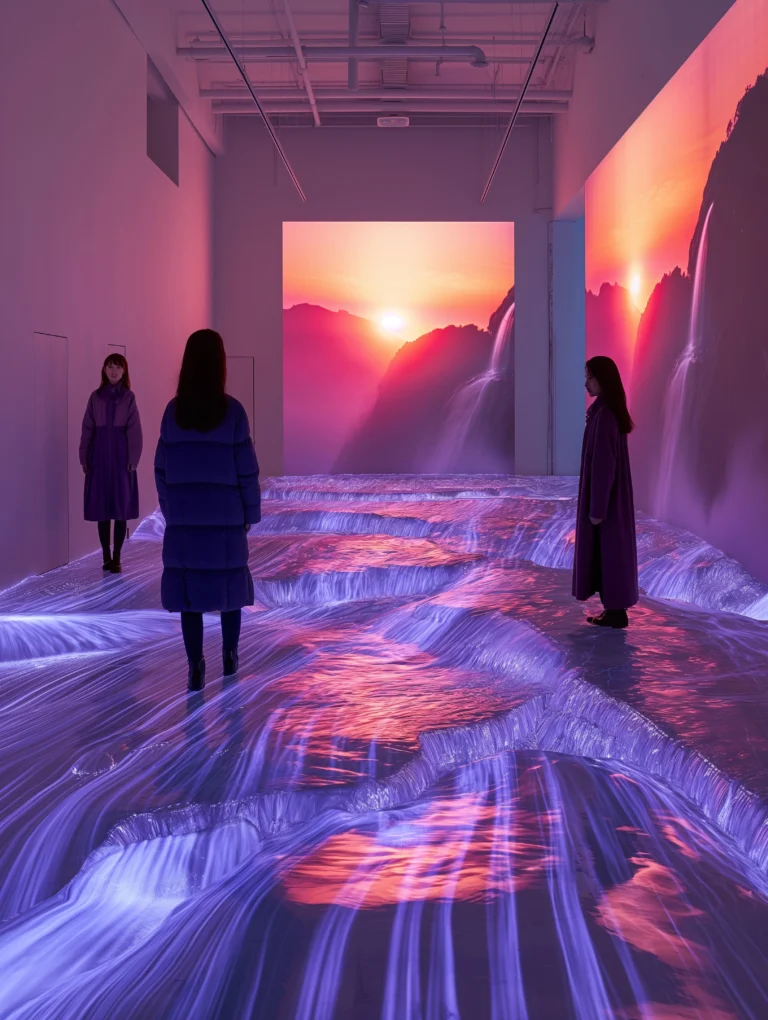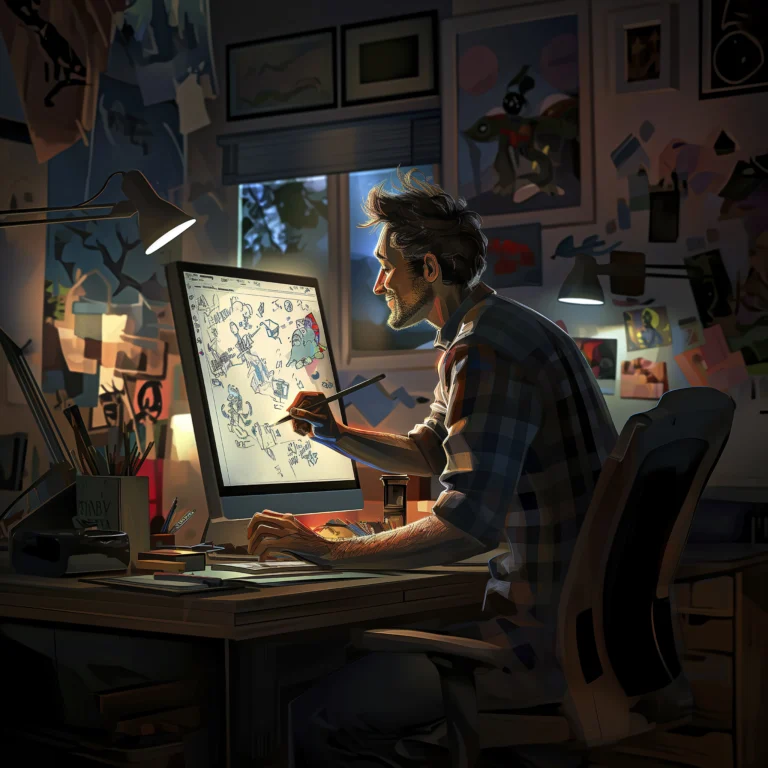Animation: From Hand-drawn to Computer-generated – Before digital tools transformed the industry, animation was a painstaking, handcrafted art form. Every frame was drawn, inked, and painted by human hands—a labor of love that gave rise to some of the most iconic and emotionally resonant films in cinematic history.
Disney and the Foundation of the Artform
No discussion of hand-drawn animation is complete without acknowledging the influence of Walt Disney Studios, whose groundbreaking Snow White and the Seven Dwarfs (1937) became the first full-length cel-animated feature in history. It was a commercial and artistic triumph that redefined what animation could be—not just whimsical shorts, but rich, emotionally layered storytelling.
🎨 According to The Walt Disney Family Museum, the film set a new standard for character development, color design, and narrative sophistication in animation.
An International Movement
While Disney dominated in the U.S., studios in Europe and Asia developed unique styles. In Japan, early anime such as Astro Boy (1963) introduced dynamic visual storytelling and serialized narratives that would shape a global movement decades later.
Meanwhile, artists like Émile Cohl, Lotte Reiniger, and Hayao Miyazaki contributed their own hand-drawn masterpieces, showcasing that traditional animation was a universal cinematic language.
Why Does Hand-Drawn Animation Still Matter?
Despite the rise of 3D, many filmmakers and fans continue to revere traditional animation for its warmth, imperfection, and human touch. It reminds us that behind every frame is a person—drawing, imagining, and breathing life into art.
➡️ What’s your favorite hand-drawn animated film—and why does it still move you?
The Digital Revolution: The Rise of Computer-Generated Animation
Enter Pixar: A Game-Changer in Animation History
The 1990s marked a dramatic shift in the animation industry with the release of Toy Story (1995), the first fully computer-generated feature film. Created by Pixar Animation Studios, the movie wasn’t just a technical milestone—it was a storytelling breakthrough.
The success of Toy Story proved that digital animation could evoke emotion, humor, and charm equal to, if not beyond, traditional hand-drawn techniques. It redefined audience expectations and launched a new era of animated filmmaking.
📈 As noted by Smithsonian Magazine, the film’s innovation lay not just in its software, but in how it prioritized character-driven narratives over gimmickry.
The Tools Behind the Transformation
Software like RenderMan, Maya, and later Blender allowed studios to manipulate virtual lighting, physics, and textures with increasing realism. What used to take hundreds of artists working frame-by-frame could now be accomplished more efficiently—with flexibility and scalability for larger, more complex productions.
This shift opened doors for new types of visual storytelling. Studios like DreamWorks (Shrek), Blue Sky (Ice Age), and Illumination (Despicable Me) emerged as global players, creating memorable characters and worlds entirely within digital environments.
Did Technology Kill the Soul of Animation?
Not at all. The best computer-generated films continue to succeed for the same reason hand-drawn ones did: empathy, imagination, and emotional storytelling. Technology is a tool—it’s the story that makes it timeless.
➡️ Which 3D-animated film do you think best combines visual innovation with emotional depth?
Blending Old and New: Hybrid Animation in the Modern Era
When Pencil Meets Pixel
In recent years, the boundaries between hand-drawn and computer-generated animation have begun to blur. Studios and artists are embracing hybrid animation techniques, combining the warmth and expressiveness of traditional styles with the efficiency and versatility of digital tools.
Films like Klaus (2019), produced by Netflix Animation, used 2D character animation enhanced by 3D lighting and texture technology. The result? A visual style that felt handcrafted but moved with the smoothness and depth of CG animation.
🖌️ This behind-the-scenes article from Cartoon Brew explains how Klaus revolutionized digital 2D by using volumetric lighting over traditional drawings.
Spider-Verse and the Rise of Stylized CG
Another groundbreaking example is Spider-Man: Into the Spider-Verse (2018). This film didn’t just win awards—it redefined what computer-generated animation could look like. Instead of striving for realism, it leaned into the comic book aesthetic with hand-drawn effects, halftones, and erratic frame rates.
The film’s influence can be seen in newer projects like Puss in Boots: The Last Wish (2022) and Teenage Mutant Ninja Turtles: Mutant Mayhem (2023), which reject hyper-realism in favor of expressive, stylized animation rooted in traditional principles.
Why Are Hybrid Styles So Effective?
Because they capture the best of both worlds: the emotional depth of hand-drawn artistry and the kinetic energy of digital animation. These styles prove that innovation doesn’t mean forgetting the past—it means building upon it.
➡️ Which animated film do you think blends old-school charm with digital daring the best?
The Future of Animation: Innovation Meets Imagination
AI, Real-Time Rendering, and Interactive Storytelling
As we look ahead, animation continues to evolve—not just in how it’s made, but in how it’s experienced. Technologies like AI-assisted animation, real-time rendering, and virtual production are rapidly transforming the creative process.
Studios are already using Unreal Engine and other game-based platforms to animate scenes in real time, streamlining production and opening up new creative possibilities. Meanwhile, AI tools are being explored to automate in-betweening, character motion, and background generation.
🎮 Interactive storytelling is also on the rise. Projects like Love, Death & Robots and Netflix’s Bandersnatch demonstrate how animation can blend with user-driven narratives, allowing viewers to influence outcomes—a bold frontier that challenges traditional linear formats.
The Timeless Power of Story and Style
No matter the technology, what truly resonates with audiences are emotionally authentic stories and distinctive visual voices. Whether it’s the hand-drawn nostalgia of My Neighbor Totoro or the bold innovation of The Mitchells vs. The Machines, great animation taps into universal feelings.
Emerging animators now have more tools than ever—but they also face the challenge of standing out in a saturated digital world. That’s where creativity, originality, and heart come into play.
Final Thoughts
Animation has come a long way—from flickering drawings on celluloid to immersive digital worlds rendered in real time. Yet its essence remains unchanged: it’s a medium of pure imagination, capable of expressing what live-action cannot.
As long as there are stories to tell, artists to tell them, and audiences ready to dream, animation will continue to evolve—honoring its past while shaping the future.
➡️ What do you think the next evolution of animation will look like?

